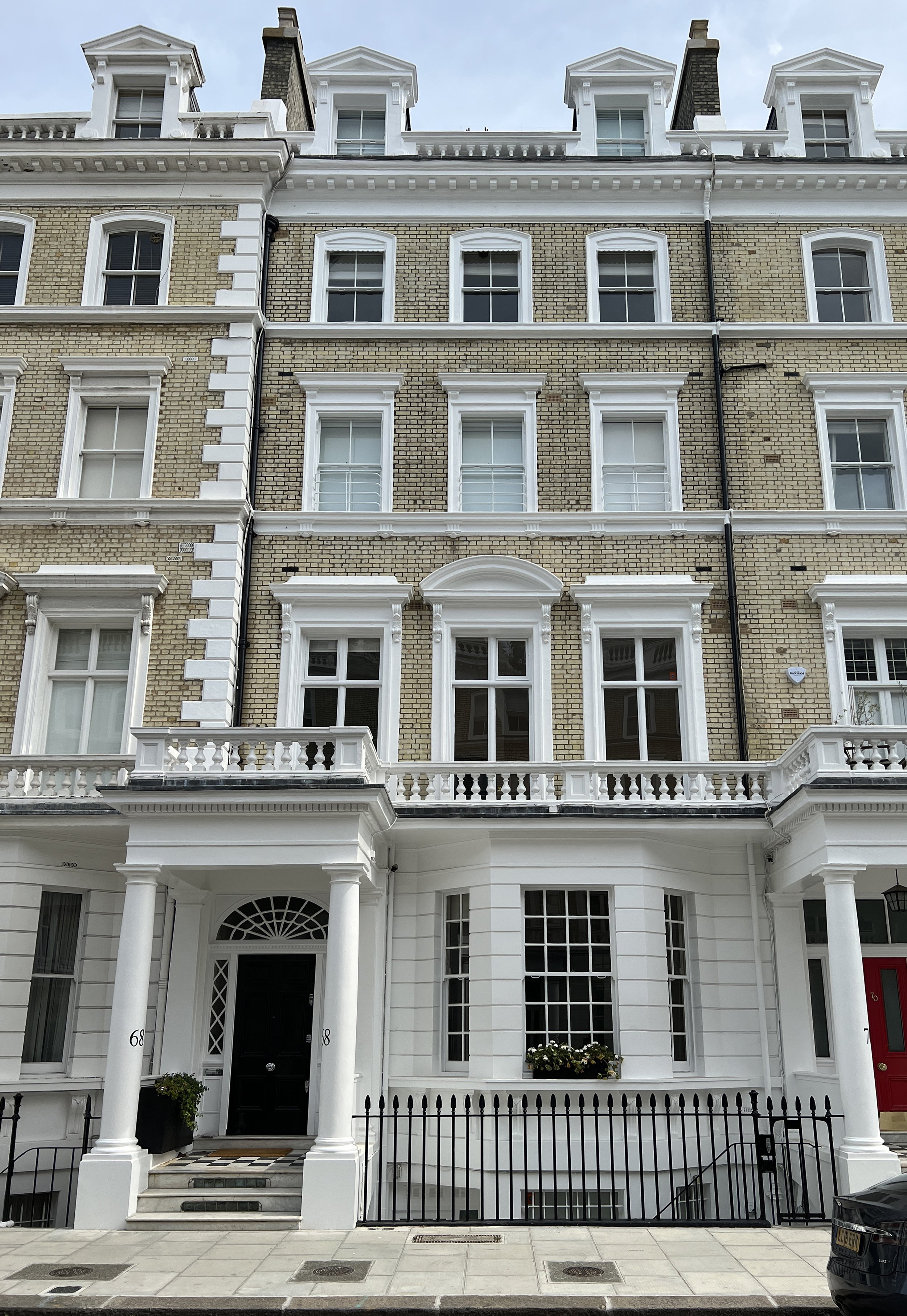Nash Baker Architects set a new precedent by successfully challenging RBKC’s amalgamation policy
For decades, councils across London have been tightening planning policies to prevent the amalgamation of properties to create so-called ‘super prime’ homes. The rise of such amalgamations can result in a loss of housing supply and depopulate areas, so it is understandable that policies restricting amalgamation are necessary. The Royal Borough of Kensington and Chelsea has seen some of the worst examples of amalgamation to create ‘mega-mansions’, so in 2019, the borough introduced a new policy of “resisting” the combination of more than two separate properties, and stipulated that the largest an amalgamated new home could be was 170sq m. In early 2022 the council announced new draft policies to outlaw the combination of separate properties into single homes altogether.
So, when Nash Baker Architects were approached in 2022 by clients who had recently purchased three stories of a grand Grade II Listed townhouse in Chelsea, comprising of a 3-bed duplex flat and 2-bed flat, which they wanted to combine to create a new family home for themselves, it appeared that the most likely outcome would be a planning refusal.
The post-war subdivision of this grand townhouse had not been sympathetic, and considerable harm had been done to this historic building. An amalgamation of the units to create a family house could help reinstate much of the historic plan form and fabric, including significant heritage benefits such as reinstating a flight of the stone cantilevered staircase which had been removed.
Whilst contrary to the council policy CH1 in respect of amalgamating housing units over 170m2, our team of Heritage Architects felt there would be considerable heritage benefits to the works, which offered a material consideration that the Council would be required to assess against the loss of a housing unit. The team went about studying the property and developing an elegant proposal which maximised the heritage gains; producing all supporting heritage research and justification in-house.
Unsurprisingly, this application was refused by the Royal Borough of Kensington and Chelsea (RBKC), with great standing applied in respect of the lack of compliance with CH1, and little consideration given to the heritage benefits.
It was our opinion that the heritage aspects of the proposal had not been considered during this planning process, and together with our planning consultant (ADL Planning) we submitted a planning appeal. This was supplemented with thorough supporting statements which highlighted areas where the council had misunderstood, overlooked, or incorrectly assessed the information provided. The strength of this original historic analysis, and resultant design proposals, led the Planning Inspector to state that:
‘the appellant’s heritage and appeal statements provide convincing evidence’
and finally directed that:
‘whilst the proposal would conflict with the development plan, insofar as it relates to amalgamations, the significant heritage benefits I have identified above, constitute a material consideration that, in this particular instance with regard to the particular circumstances of the proposal, warrant taking a decision other than in accordance with the development plan. In that regard, the adverse impact of the proposal on housing supply would not significantly and demonstrably outweigh the significant heritage benefits arising from the enhancement of the listed building’.
This achievement stands out as an unprecedented approval with RBKC, and showcases the remarkable capabilities of our team in navigating the complexities of planning regulations. It is a testament to the exceptional quality of our in-house Conservation Team.
We take pride in embracing the intricacies and challenges inherent in the planning process; often in challenging scenarios where others might hesitate. This success is the latest addition to a series of recent planning and listed building triumphs; underscoring Nash Baker’s tenacious approach to securing approvals for our clients.
The challenge of working with such historic properties inspires us to think outside of convention, and to tailor our solutions to the individual character of each location. Our commitment to creating bespoke solutions goes hand in hand with a deep respect for the context. Embracing this challenge requires not only technical expertise, but a genuine passion for the historical narrative embedded in these structures. Our success is built on carefully seeking the right balance between preservation and innovation, ensuring that our designs pay homage to the past while meeting the needs of the present and future.
By choosing to work with us, you are not just engaging a design team; you are partnering with a group of individuals who relish the opportunity to transform historic spaces into beautiful properties, which carefully balance tradition with modernity.
This recent planning approval reflects not only our ability to navigate the regulatory landscape, but also our passion and commitment for delivering outstanding and innovative solutions. As we celebrate this achievement, we look forward to continuing our journey of turning planning challenges into creative spaces that truly inspire.’

